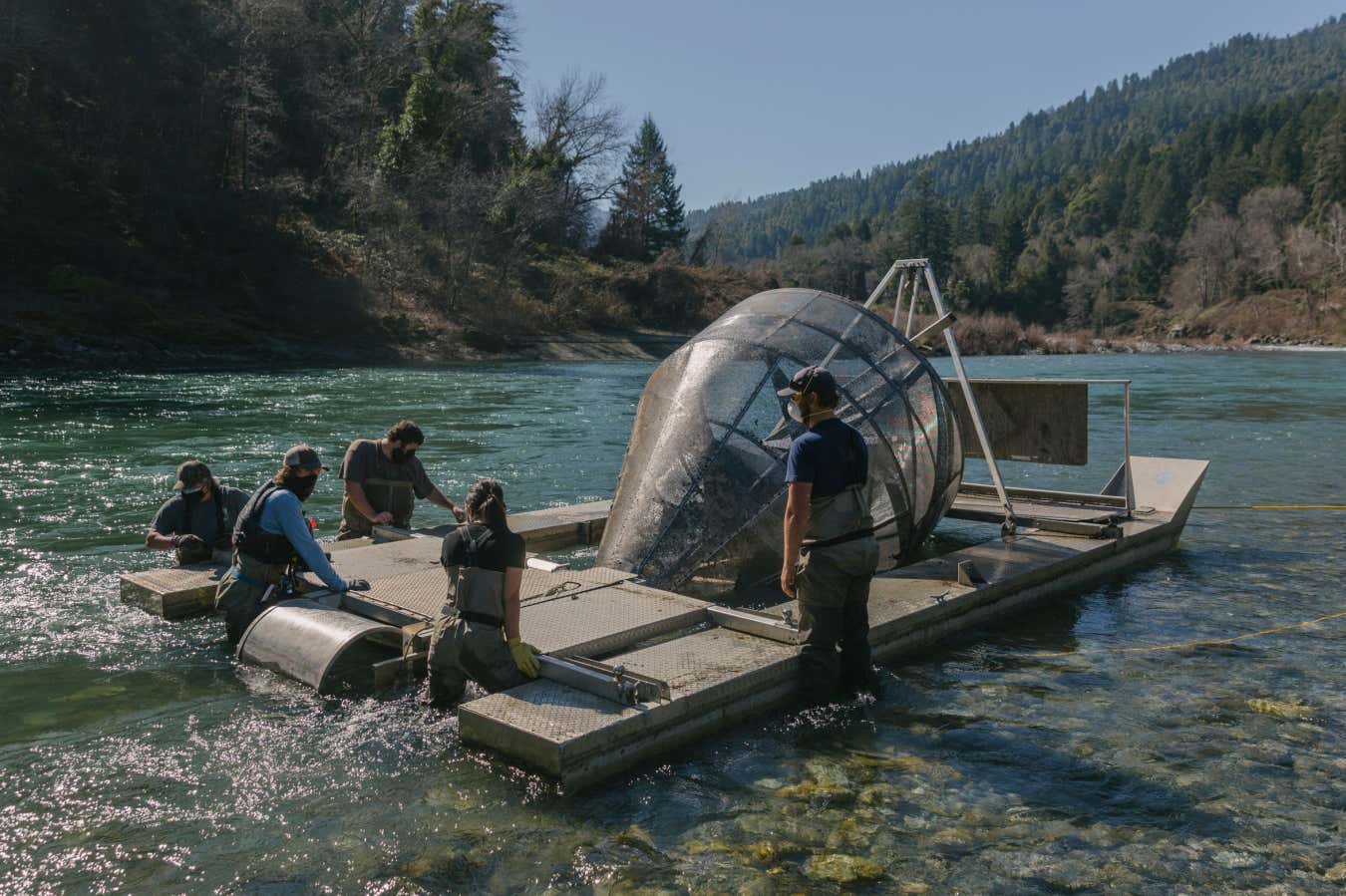This photo series capturing efforts to save the Chinook salmon of the Klamath river in the western US won the New Scientist Editors Award at the Earth Photo 2025 competition
Yurok Tribal members and biologists set up fish traps with technicians on a tributary of the Klamath River in CaliforniaVivian Wan
Yurok Tribal members and biologists set up fish traps with technicians on a tributary of the Klamath River in California
Restoring a way of life is at the heart of this photograph by Vivian Wan, part of a series that won the New Scientist Editors Award in theEarth Photo 2025 competition.
It shows members of the Yurok community working with biologists and technicians to set up rotary screw traps on the Trinity river, a major tributary of the Klamath river, in Willow Creek, California. The team uses fish traps to check the animals’ health and study their migration patterns.
Read moreFive climate megaprojects that might just save the world
Five climate megaprojects that might just save the world
The Klamath basin is at the heart of Yurok life, with its rich waters providing large Chinooksalmon(Oncorhynchus tshawytscha), which hold deep cultural and spiritual significance to the community. But two centuries of colonisation in the region have displaced the Yurok and depleted local resources through mining, logging and the construction of dams.
Climate change and diverted river water further pushed the salmon population to the brink. In 2002, new irrigation policies resulted in tens of thousands of Chinook salmon in the Klamath River dying. This added impetus to a decades-long fight to remove the river’sdams. Last year, the final dam on the river was dismantled.
For Wan, the aim was to explore how Indigenous communities lead the battle for environmental justice. “I hope viewers come away with a deeper sense of respect for the Yurok people’s strength, culture and fight to protect Klamath basin,” she says.
Below, Hunter Mattz, a technician with Yurok Fisheries, studies a monitor showing magnified salmon scales to gain more clues about mortality rates from fishing and natural causes. The data helps set catch limits and spawning goals, as well as forecasting run size – the number of salmon that enter a river or stream during a specific period, typically in an annual migration, which is a key indicator of the health and abundance of a salmon population.
Mattz, a third-year Yurok Tribe Fisheries Technician, observes a monitor displaying magnified salmon scalesVivian Wan
Mattz, a third-year Yurok Tribe Fisheries Technician, observes a monitor displaying magnified salmon scales
Here, Mattz holds up a needle-thin tag, which contributes data to the fish-monitoring research programme.
Mattz holds a tiny fish tag that contributes data to the fish monitoring programVivian Wan
Mattz holds a tiny fish tag that contributes data to the fish monitoring program
Mattz oversees the Net Harvesting Project. His role involved navigating a more than 70-kilometre journey from the mouth of the Pacific Ocean through the estuary, the middle of the Klamath basin and on past Blue Creek, California. This work was crucial in collecting data on fish species caught in nets and lines by local residents. The recorded data has helped secure grants for marine conservation efforts in the Klamath area.
A portrait of Hunter Mattz, who also collects data on fish species caught in nets and lines by local residentsVivian Wan
A portrait of Hunter Mattz, who also collects data on fish species caught in nets and lines by local residents
All winners in the Earth Photo competition were chosen by a panel includingNew Scientist’s picture editor, Tim Boddy, and head of editorial video, David Stock. See the Earth Photo 2025 exhibition at London’s Royal Geographical Society until 20 August, before it tours the UK.
Receive a weekly dose of discovery in your inbox!
We'll also keep you up to date withNew Scientistevents and special offers.
